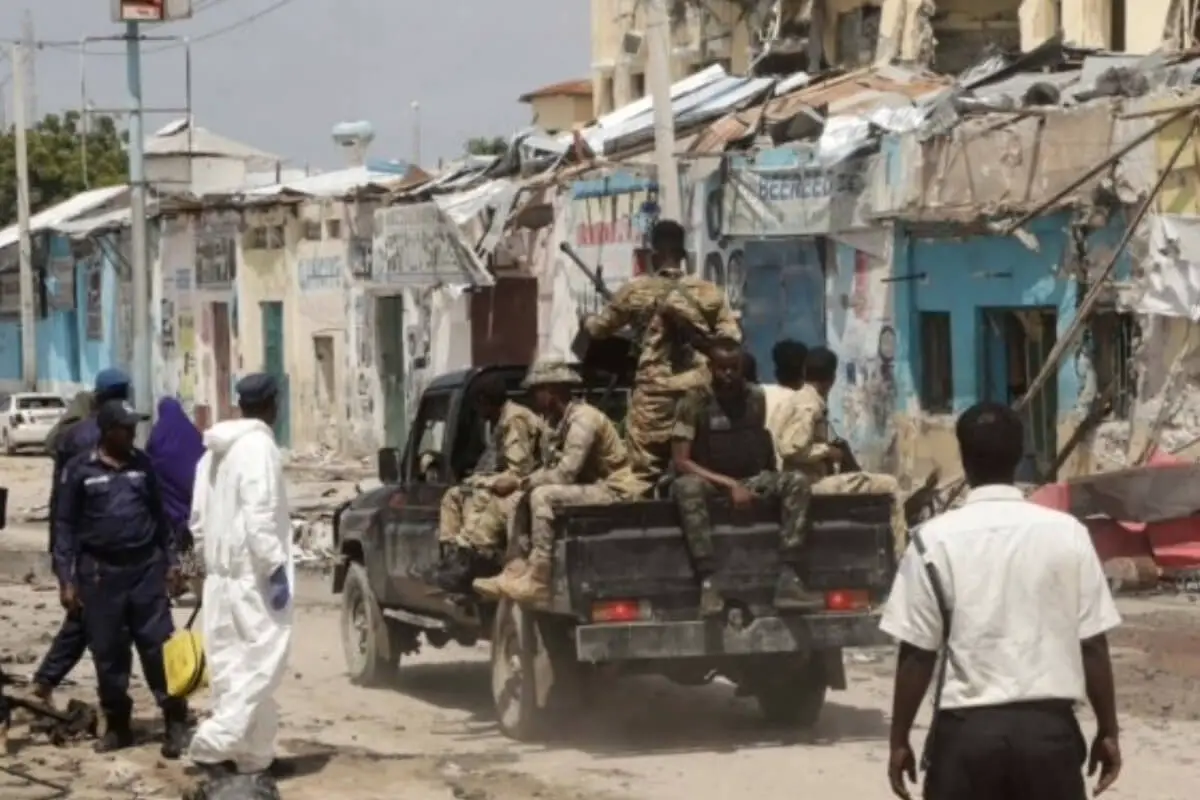Often hidden beneath the headlines is a story of resilience and recovery in Somalia. Emerging from a convoluted web of historical, political, and social triggers, the Somalia War posed monumental challenges to stability and peace within the nation. Consequently, the face of Somalia, embroiled in a distressing conflict for decades, offers a compelling study of the complexities of modern warfare and its profound global implications.
This narrative aims to untangle the threads of the Somalia War, delineate vital turning points, ascertain international involvement, and probe into crippling humanitarian issues it precipitated. Ultimately, it intends to shed light on the resultant attempts at reconstruction and the current status of Somalia.
Table of Contents
- The Backdrop of the Somalia War
- Major Events and Turning Points
- International Involvement and Humanitarian Issues
- The Aftermath: Reconstruction and Current State of Somalia
- Related Questions
The Backdrop of the Somalia War
Delving into the Depths: An Odyssey into the Origins of the Somalia War
Life can often seem like a convoluted journey, a twisted labyrinth of intertwining paths, brimming with splashes of joy and dotted with shadows of conflict. It’s akin to a global vagabond entering a new territory, exploring every nook and cranny of history. Somalia is a vast and complicated territory, its history marking a testament to human resilience.
Tragedy has a knack for seeping into the tapestry of human history. The Somalia war wasn’t an exception. So, buckle up, wanderlusters; the journey toward understanding this cataclysm might be bumpy but undoubtedly worth understanding.
Right out the gate, let’s shed light on a significant root cause of the Somalia conflict: the deposition of Siad Barre during the 1991 civil war. Barre’s authoritarian regime had kept the peace via a brutal fist, but when his regime fell, a power vacuum emerged.
The scramble to fill this void created fertile grounds for the outbreak of further conflict. This trend is not unfamiliar- history tells this tale repeatedly.
Yet, one can’t discuss the outbreak of the Somalia War without addressing clan cleavages. Often, it’s the simple things, like the sense of belonging, that propel the big, complex things like conflict. Going back for centuries, with deeply ingrained rural traditions, Somalia’s clanship system was the drumbeat to the civil unrest. Inter-clan rivalries amplified by societal insecurity and a desperate grab for resources spilled over, fueling the flames of war.
Meanwhile, remember that not-so-friendly character pollution in ecology class? Environmental degradation played a similar role in the outbreak of the Somalia War. The fragility of Somalia’s arid land, exacerbated by deforestation and overgrazing, contributed to devastating famines. The struggle to control the scarce fertile land and water resources only enhanced political and social tensions.
Let’s not forget the impact international intervention can have. In the wake of the Cold War, the strategic value of Somalia for superpowers dwindled, leading to a considerable reduction in economic and military aid. This essentially left the Somalia government, already teetering on the brink of collapse, without external support, exacerbating an already frazzled situation.
And a final stop on our tour of this intricate web: the widespread availability of small arms and light weapons. A disturbing yet familiar component of modern conflict. Somalia’s situation was complicated due to the outpouring of weaponry in the region due to the Ethiopian Civil War. This unrestricted access to deadly tools accelerated the already smoldering fire.
Final words? Reflection leads to understanding, and understanding, to empathy. As one jauntily journeys through the vast landscapes of our planet’s past, it’s important to explore not just the palaces and monuments but also the ruins and conflict zones. In every shadow of human history, there lies a lesson to be learned, a story to be told, and a path to be tread more wisely in the future.
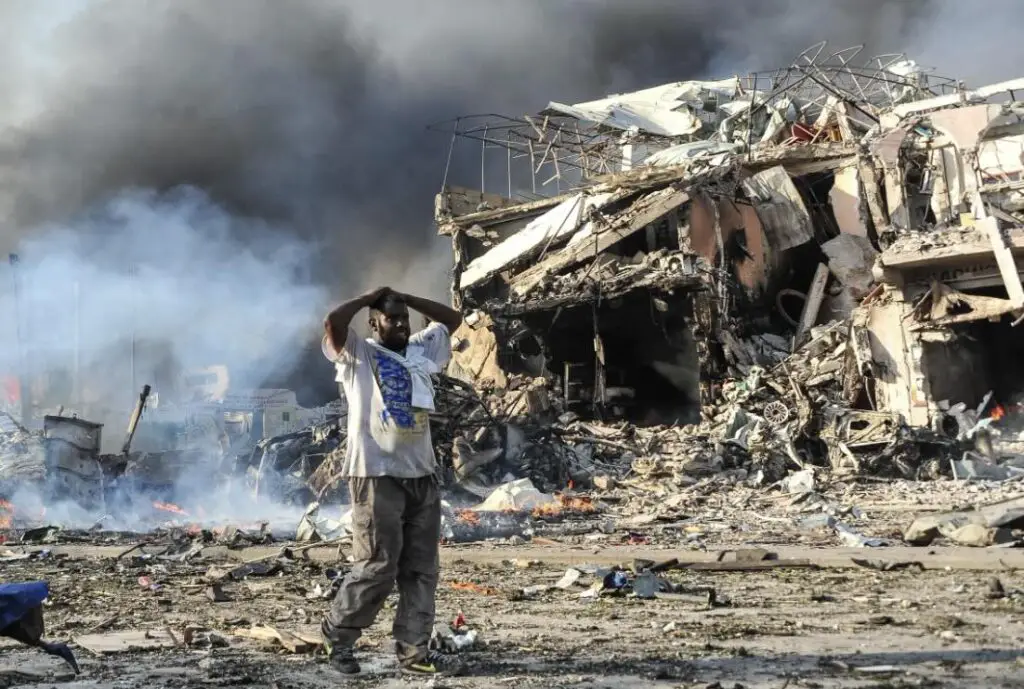
Major Events and Turning Points
Shaping the Flow of the Somalia War: Key Events and Decisions
Picture the intricate puzzle of a nation’s history, and within it lies a complex piece, more like a challenge – the Somalia War. Tenacious and tumultuous, every twist and turn within this ongoing conflict is no less than an expedition into the abyss. Despite many reasons that led to its incipience, certain critical events and decisions stand out as pivotal to the course of the Somalia War.
Fast forward from the deposition of Siad Barre, one finds another critical milestone, Operation Restore Hope in 1992. Initiated by the United Nations and strongly backed by the United States, the humanitarian intervention aimed at ensuring food distribution amidst a severe famine.
However, the operation morphed into a military fiasco following the Battle of Mogadishu in 1993. This led to a drawback of international intervention from Somalia, leaving a lasting imprint on the nation’s destiny.
Another crucial event was the rise of the Islamic Courts Union (ICU) in 2004. A coalition of Sharia courts, the ICU seized control of much of Southern Somalia until 2006, curbing the warlords’ rampant power. This temporary period of relative peace and stability they were quickly corroded when Ethiopia, alarmed by the increasing power of the ICU, intervened militarily. Backed by the U.S., this intervention led to the ICU’s disintegration, crucially disrupting the path of the conflict.
The Ethiopian invasion’s far-reaching effects resulted in the emergence of Al-Shabaab, an extremist faction and offshoot of the ICU. The group’s creation escalated the conflict to unanticipated levels as they waged a terror-driven insurgency against the nascent Federal Government of Somalia. Al-Shabaab’s emergence and its subsequent alliance with Al-Qaeda in 2012 largely shaped the character of the ongoing conflict, inclining it more towards a struggle against terrorism.
One can’t forget the controversial role of international actors, chiefly the U.S.’s growing interest in combating Islamic extremism. This renewed engagement led to the increasing usage of drone strikes against Al-Shabaab, which, while effective in its mission, also led to civilian causalities, fueling further discord.
Lastly, the decision to form the African Union Mission in Somalia (AMISOM) in 2007 was seminal. Its impact goes beyond combating Al-Shabaab, as AMISOM also helped build political institutions, trained security forces, and facilitated humanitarian aid, serving as the primary peacekeeping force in Somalia.
In the soul of a wanderer, the journey is endlessly fascinating, regardless of the path’s bumps and bends. Similarly, understanding the Somalia War demands patience and acceptance of its complexity. Like a gust of wind, each event, decision, and participant has sailed this ship on its unique course. Here’s to hoping the winds change, leading Somalia towards a horizon of peace and stability.
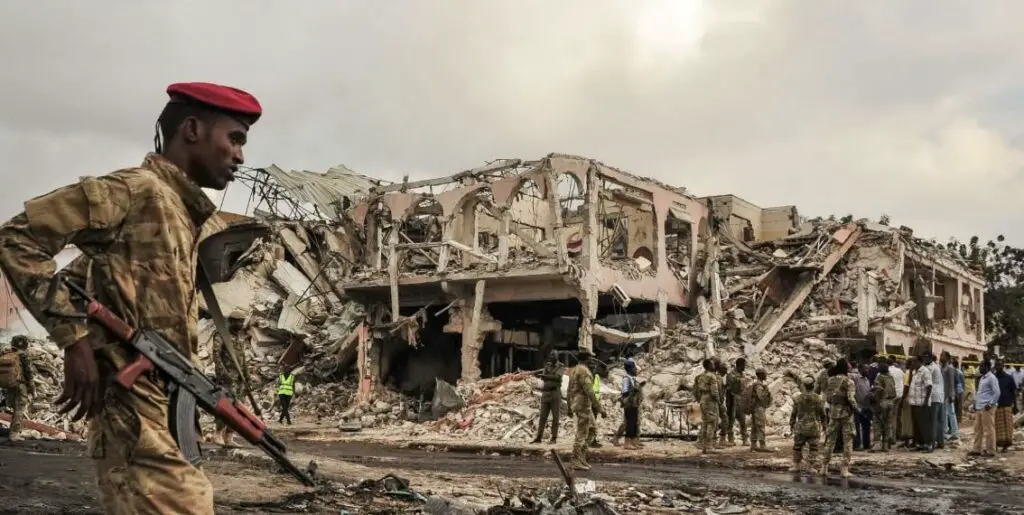
International Involvement and Humanitarian Issues
Swooping in from our prior discussion, let’s dive into how international bodies were engaged in the scenario and the strategy adopted to navigate the humanitarian concerns. It indeed is a riveting facet of the Somalia War. Cue the creased maps and dog-eared travel guides to uncover the far-reaching propellers of this conflict.
Before we travel any deeper, let’s take a pit stop at the pivotal 1992 Operation Restore Hope. Spearheaded by the United States, this was a noble humanitarian relief initiative backed by the United Nations (U.N.). As a part of the U.N. Security Council’s UNSCR 794, the operation had echoes reverberating globally. It aimed to create a safe environment for delivering food relief to Somalia, assuaging the famine that threatened to claim lives in the thousands.
Journeying further, we stumble upon the notorious Battle of Mogadishu of 1993, another prime sample of international intervention. This strenuous military operation was hellbent on capturing Somali faction leader Mohamed Farrah Aidid. The mission, sadly, didn’t pan out as expected, resulting in numerous casualties and triggering global debate surrounding foreign intervention endeavors.
The way from 1993 led us to the rise of the Islamic Courts Union (ICU), a group seeking to pioneer an Islamic State, causing significant international concern. The power vacuum left by the Somali government’s collapse granted ICU enough room to mushroom and manage to control a substantial part of Southern Somalia by 2006.
However, the ICU’s reign was short-lived due to yet another compelling international intervention, this time orchestrated by Ethiopia. Backed at least implicitly by the U.S., Ethiopia stepped in, triggering a fierce war in late 2006, leading the ICU to its dissolution by the end of December of the same year.
Even though the ICU fell, from its ashes arose Al-Shabaab. This hardcore militant group allied with Al-Qaeda and increased the complexity of the conflict. International bodies, especially the. The U.S. has raised its vigilance against this emergent threat. The methods employed certainly stirred a buzz – unmanned aerial drone strikes used to target Al-Shabaab leaders, hence scrutinized by humanitarian organizations & legal scholars globally.
The African Union (A.U.) didn’t lag in response to this escalating crisis. The African Union Mission in Somalia (AMISOM) was launched in 2007, a peacekeeping mission to which the U.N. Security Council granted the green light. AMISOM was mandated to support transitional governmental structures, further stabilize the crisis, and foster a favorable environment for peace and reconciliation.
Humanitarian concerns were undeniable in this international chess game, fueling the formation of comprehensive strategies. The link between warring parties and aid agencies was fortified, allowing meaningful negotiation on humanitarian access. Transparency was encouraged, assuaging concerns over aid misuse and corruption.
The silver lining in this tragic tale seems to have been the international recognition of the situation’s delicacy, sparking an effort toward better stability. Despite geopolitical ambitions and unforeseen consequences, the goal was the betterment of Somalia. Analogous to our wanderlust hearts, we are always open to change and trying to make the world a better space, one travel story at a time.
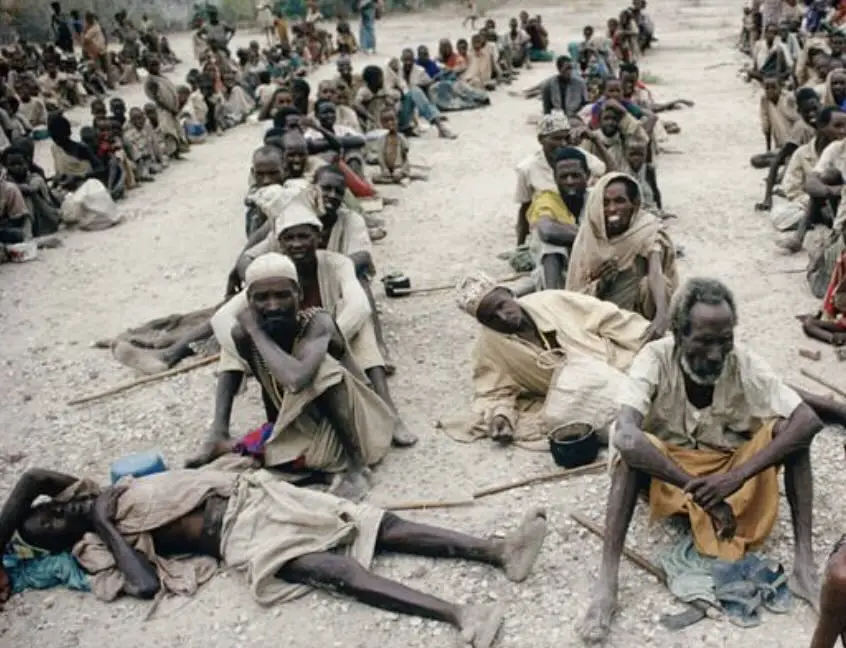
The Aftermath: Reconstruction and Current State of Somalia
Post-war recovery is an intriguing process that ebbs and flows, and in few places are the intricacies more evident than in Somalia. Most notable is how the country navigated flipped turmoil during ‘Operation Restore Hope’ in 1992 when the United States and the United Nations joined hands to intervene amid the escalating humanitarian crisis following the expulsion of Siad Barre.
Yet, even as they aimed to create a glimmer of optimism, the subsequent ‘Battle of Mogadishu’ in 1993 sparked global debate around the effectiveness and ethics of foreign interference in national matters.
When talking about a shift in power dynamics, one cannot downplay the rise of the Islamic Courts Union (ICU) that ushered in a brief period of stable governance and rekindled concerns about the creation of an Islamic State in this East African nation. However, the tussle for control saw a new twist with Ethiopian intervention in 2006, leading to the dissolution of the ICU.
But as travelers know, never underestimate the resilience of the human spirit. The seeming power vacuum led to the emergence of Al-Shabaab, and a familiar war-torn landscape started taking a new shape. This group not only gained control over large Southern areas but also inked a sinister alliance with the global terror network Al-Qaeda that intensified the conflict in the region.
The role of international players in this saga also transformed. The United States, for instance, shifted gears from ground operations to significant use of drone strikes to target Al-Shabaab leaders. While effective in mitigating immediate threats, this approach stirred controversy due to concerns around collateral damage and long-term impact on civilian life.
The above turmoil shaped Somalia’s socio-political landscape and the Horn of Africa. It ultimately culminated in forming the African Union Mission in Somalia (AMISOM) in 2007. Drawing troops from various African nations, this peacekeeping mission revitalized efforts to restore stability and support structures, enabling the beleaguered nation to regain its footing.
One must, however, take a moment to appreciate the indomitable human spirit seen in the strategies adopted to address humanitarian concerns amid persistent violence. The relentless pursuit to ensure aid access and stabilize the supply of essentials has kept the hope of a brighter tomorrow alive.
While the road to recovery after any conflict can be rocky and filled with unforeseen bends, the international recognition of the necessity for stability in Somalia reflects the collective global desire to see the country flourish again. Indeed, the phoenix arises from its ashes, and in Somalia’s case, every step forward in this journey adds a new chapter to its vibrant, resilient narrative.
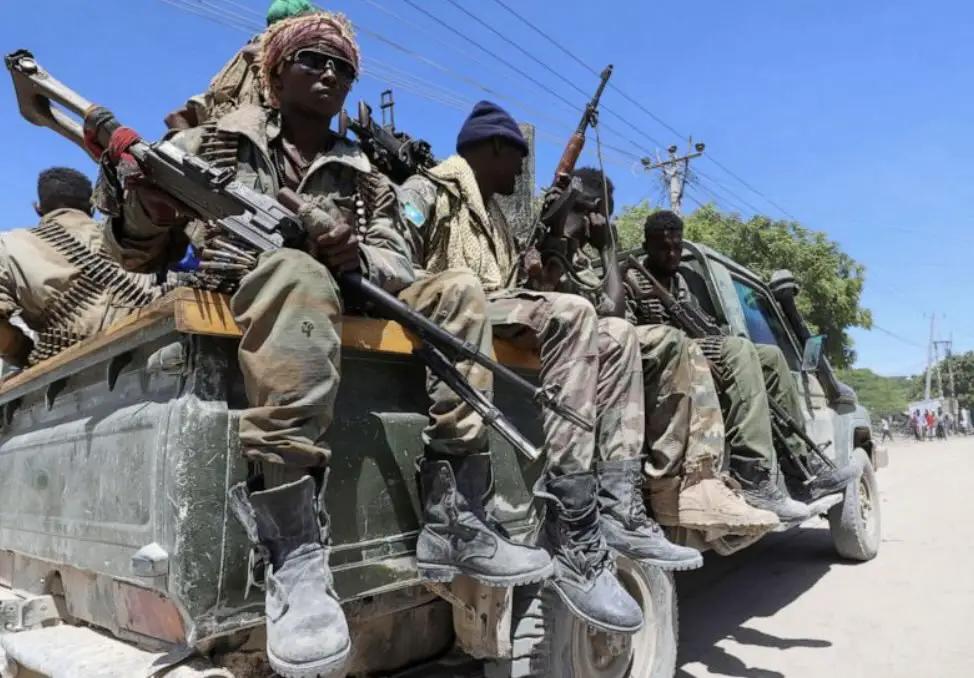
Acknowledging the extensive international involvement and the consequential humanitarian crisis, every learner gains a strategic insight into the aftermath and the resilience of Somalia.
After years of conflict and turbulence, the nation is making significant strides toward reconstruction and socio-political reform. Though fraught with challenges, the process is a testament to its people’s enduring spirit and their unwavering pursuit of peace and progress.
Through this lens, the story of Somalia offers a valuable exploration of the interconnectedness of our global community, the dire consequences of conflict, and the resilience of humanity toward recovery.
At A Bus On A Dusty Road, we talk about everything about travel, life, and ex-pat living. We are all about “Living Life As A Global Citizen.” We explore social, cultural, and economic issues and travel.
We would love to have you be part of our community. Sign up for our newsletter to keep up-to-date by clicking here. If you have any questions, you can contact me, Anita, by clicking here.
Listen to our Podcast called Dusty Roads. You can find it on all major podcast platforms. Try out listening to one of our podcasts by clicking here.
Subscribe to our A Bus On A Dusty Road YouTube Channel with great videos and information by clicking here.
Related Questions
When Was China’s War With Vietnam?
China and Vietnam have a long history with one another, which includes wars and conflicts that date back to the 7th century. In recent years, both nations have become important trading partners, but there is still tension between them regarding their shared border in Southeast Asia.
By clicking here, you can discover When Was China’s War With Vietnam?
Could America Have Won The Vietnam War?
America could not have won the Vietnam war as America never won the hearts and minds of the Vietnamese people. The Americans had a hard time controlling the Vietnamese people in South Vietnam; many Southern Vietnamese were disillusioned with the South Vietnamese government. Ho Chi Minh, the leader of North Vietnam, fully understood that another foreign power could never fully control the Vietnamese heart and soul.
By clicking here, you can discover Could America Have Won The Vietnam War?
How Many Vietnam War-era Bombs Are Still in Vietnam?
I live a few miles from downtown of Hanoi, Vietnam; my house is only a few miles from the famous Hanoi prison where many American service members were held prisoner during the Vietnam War. Today, Hanoi is a bustling city home to millions of people, yet they continue to find unexploded Vietnam War-era bombs throughout Hanoi.
By clicking here, you can discover How Many Vietnam War-era Bombs Are Still in Vietnam?

